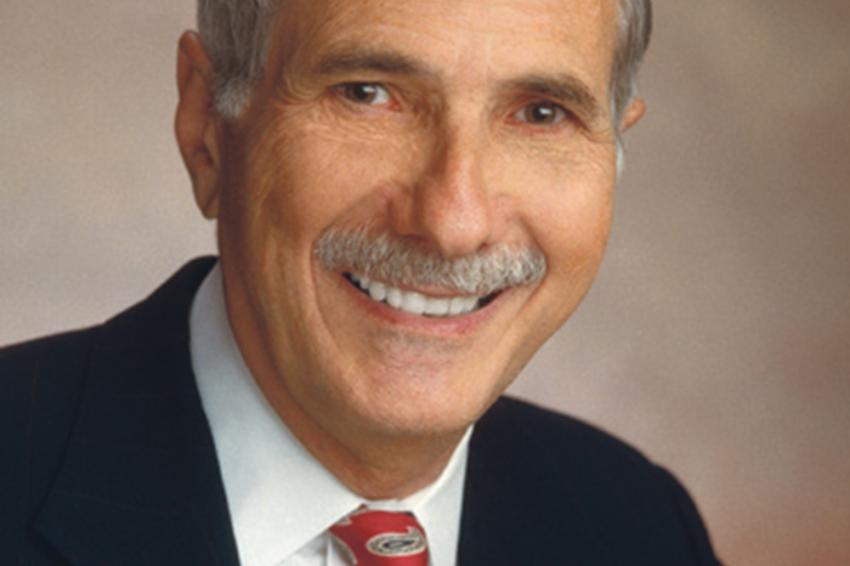Overcoming USA Sales Resistance
The European Corporation’s Guide to USA Market Entry
It is estimated that more than 60% of German companies attempting USA market penetration, subsequently fail and withdraw from the market. Europeans often incorrectly attribute this to differences in European versus American corporate cultures, or alternatively to American chauvinism (buy American). Neither of these are the root cause. Thus, Europeans address the wrong potential problems when planning for USA market entry.
The cause for USA market resistance stems from the perceived lack of the Europeans’ commitment to the USA market, as viewed, and sometimes experienced by the Americans. Thus, the Europeans are asking the Americans to take the related risks that the Europeans will be available long term to provide for after sales service, quick delivery times and availability of spare parts. Ultimately, if the European continues to make losses in his attempt to enter the USA, the European will indeed withdraw, thus abandoning the Americans. It is important to note that the decision regarding withdrawal is made totally by the European manufacturer. Thus, he is asking the American to take a risk on the European’s USA longevity, notwithstanding that the American has no control over this decision.
Cultural Similarities and Differences
Admittedly the corporate cultures on the two sides of the Atlantic are not identical. However, the similarities are much greater than the differences. Both are hierarchical. Also, for European innovations where there are no American competitors, the “buy American” explanation cannot apply. How then can Europeans overcome the market resistance encountered when entering the USA?
To answer that question, it is first necessary to compare the demographies of Europe with that of the USA, e.g., the population density of western Europe is ca. 7-12 times that of the USA.
Notwithstanding the low population density of the USA, American customers prefer to purchase from local salesmen and this is impossible unless the European manufacturer sets up local offices throughout the USA. Not only does this require the huge unacceptable costs of doing so, but also, there is not enough business in each sales territory to support an office.
Sales Representatives
Thus, to be competitive, US manufacturers make extensive use of selling through sales representatives, a structure which requires delegating sales responsibility to rep firms which sell other products as well. The reps may have 10 or more product lines. Europeans are uncomfortable with sharing their salesmen with other manufacturers, but need to do so in the USA. Managing sales representatives while sharing them with other companies may require a skill to be developed by the Europeans. It is difficult for European management to transition from selling directly through a company staff member to selling through sales representatives whose time and attention must be shared with other manufacturers. Please note also that strong sales representatives are approached ca. every two months to take on new product lines, but accept new lines only about twice per year.
Europeans need to know that there are two types of sales representatives, namely (1) commission based and (2) buy/resell.
For the commission based, the representative is assigned an exclusive sales territory, for which he is solely responsible for all customers including end users, dealers, OEM customers, etc. By contract the rep is allowed only to sell in his territory, thus avoiding the possibility of two reps competing with each other. Pricing is set by the European manufacture and credit is extended to final customer. The rep is paid only when the European manufacturer is paid.
In the buy/resell case, the European manufacturer sells to the representative who then sets the final price, i.e., the European loses pricing authority. Also, the creditworthiness lies with the rep firm which is often only a 2-4 person operation and does not have the financial stability of large end users. In the USA, the commission sales rep is preferred; in Canada the buy/resell structure is used.
Sales Development versus Sales
Sales representatives are paid a sales commission as a percentage of sales. However, in the early stages of USA market entry, the European is asking the US sales rep to manage the Sales Development process, strikingly different from that of sales, per se. For example, sales development involves displacing an existing competitor and e.g., includes getting on “Approved Vendors” lists, or their equivalent. There is no compensation for sales development other than the sales commissions occurring when and if sales eventually take place. The European must therefore provide extensive support to the sales rep in the form of sales leads, e.g., references from participation in international trade fairs, presentation of papers are professional conferences, references to the US subsidiaries of the European’s existing international customers, etc.
Furthermore, the European manufacturer must recognize that the American sales rep has product knowledge sufficient only to open the customers’ doors for European experts, but that his knowledge is often insufficient to close sales.
An alternative approach for managing sales development is to pay the sales representative a monthly retainer for a specified period to open the market. We recommend against this.
Thus, the European manufacturer should be prepared to send a product expert to the USA to provide product knowledge support to the American reps as needed, e.g., 4-8 times per year. It is even better to post a European product manager to the USA for one year, if the workload justifies it. In addition, the Managing Director of the European company should visit the USA at least two times per year in the first few years.
“Fast Buck” Strategy
A strategy sometimes followed by European manufacturers is to identify an American manufacturer, which already has contacts with the European’s US target customer base, and which sells non-competing products. The European arranges with the US manufacturer that the American sell the European’s products through the American’s existing sales network in parallel with the American’s products. Thus, the European hopes to gain immediate access to the entire USA market. This strategy for the European is high risk and has a high failure rate.
There are several reasons for failure with this approach:
- The American has a substantial investment in manufacturing his own products but no investment in manufacturing the European’s products. He must give top priority to selling his own products, and has limited time for the time consuming sales development process for the European newcomer.
- The American but not the European has personal relationships and trust of his customers and may eventually decide to copy and manufacture the European product.
- In the unlikely event that this strategy does work well, the European will have to pay double commissions in the USA, i.e., to the American manufacturer and also to his sales rep network.
Staffing
If the European opts to establish a one man office in the USA for sales development reasons, the question emerges as to whether that individual should be European or American. Intuitively, Europeans assume that he should be American to address so-called “cultural” differences. This is also a mistake. Penetrating the USA market is a challenging task and the person responsible will experience much rejection. What is needed is a person deeply committed and loyal to his company’s European headquarters. He must also have credibility there. He may also experience delays in responses from the European headquarters, for e.g., quotation inquiries, noting that large volume inquiries from key European customers take priority over small inquiries from potential new US customers.
Summary
To summarize, sales resistance experienced by Europeans in the USA is due to a lack of empathy for the Americans who are per se being asked to take risks by dealing with Europeans who may not stay in the USA if the Europeans make continuing losses. The Americans have no control over the European’s decision to stay or withdraw. Close communication between the European and his US sales representatives is required.
Contact:
Dr. Marvin L. Baker
High Technology Associates
5739 Longmont Lane
Houston, Texas 77057
E-mail: htahouston@sbcglobal.net
Phone: +1 713 963 9300
Contact
High Technology Associates







